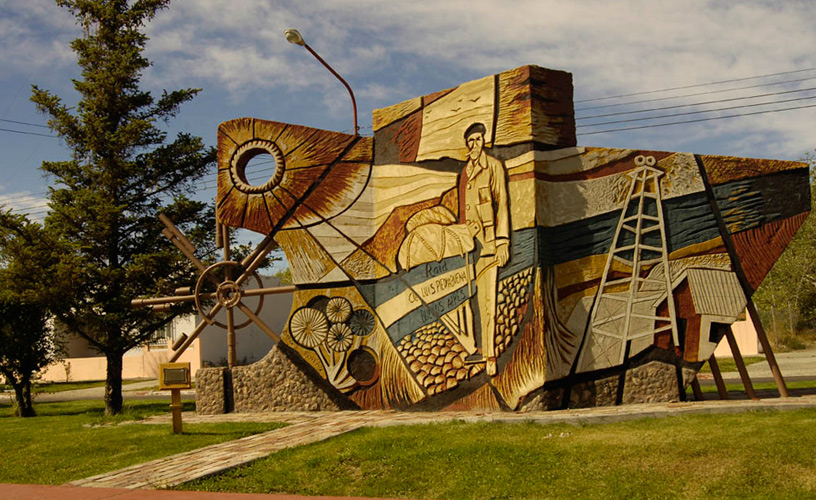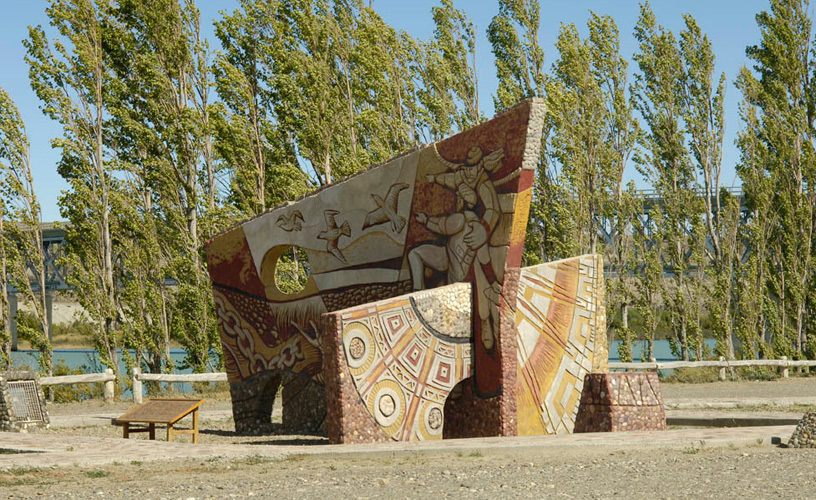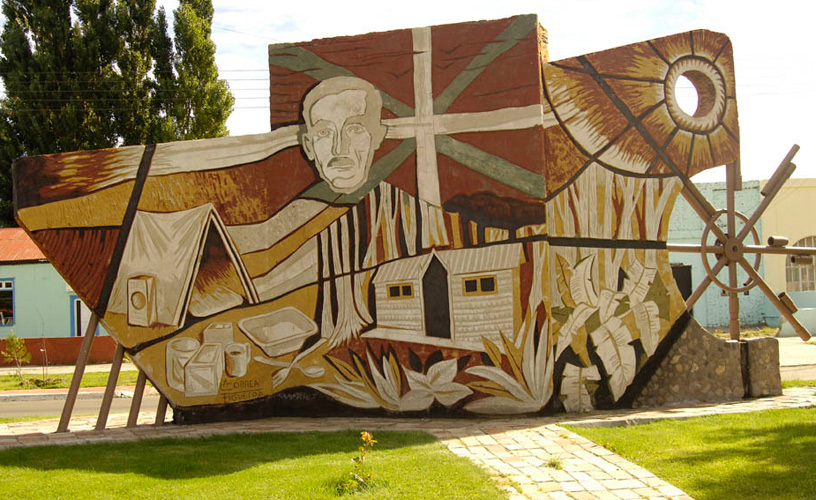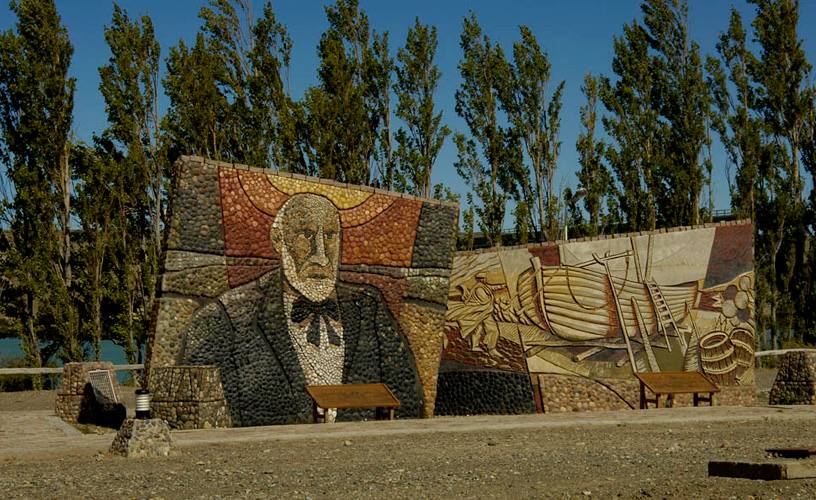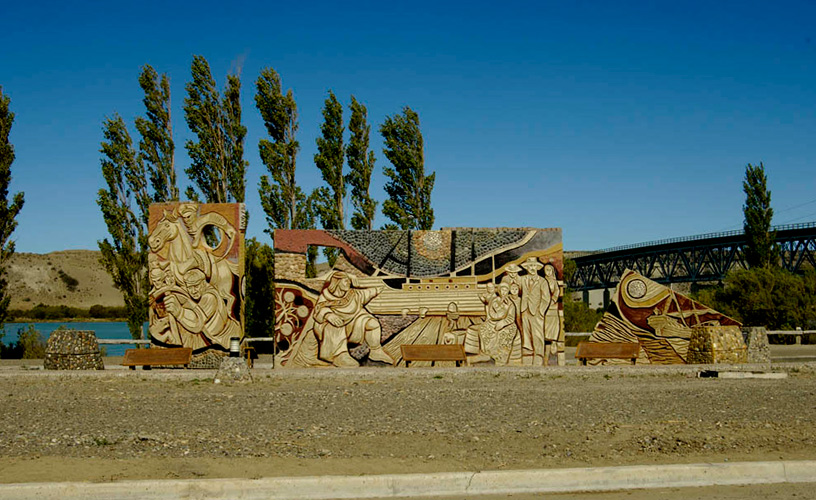What does Piedra Buena, a cold city in Santa Cruz, have in common with Goya, a hot city in Corrientes?. The answer is simple: a popular art named Muralism has used its walls to leave an indelible mark.
What does Piedra Buena, a cold city in Santa Cruz, have in common with Goya, a hot city in Corrientes? Is there a bridge that connects them both? Do they have an embracing related history? The answer is simple: a popular art named Muralism has used its walls to leave an indelible mark. Not only did these works of art call the skeptics’ attention but also turned both cities into tourist spots, where visitors can learn about this new artistic attraction.
In Corrientes, Arte Ahora
In Corrientes, the group Arte Ahora (Art Now) founded in the late 80’s, has tried to break down the elitist art privileges and generate a more generous and popular art, of greater cultural significance. Thus, these artists have given life and color to the City of Corrientes as they decorated it with more than 70 murals. Today, although the group is broken up, those who were its members still preserve muralism as an art for everyone.
Being 350 meters long and 7 meters high, the biggest mural in Latin America called “Mural de la correntinidad” was painted by the Arte Ahora group on one side of the bridge connecting Corrientes and Chaco.
This mural was the first exponent in the art exhibition organized by Juan Carlos Soto, founder, guide and leader of the group Arte Ahora, as part of the project “Corrientes, the city of murals” started in the spring of 1991. This group used the murals to foster artistic and free expression education.
The death of the leader, Juan Carlos Soto, affected the group, which decided to break up after three years. The project remained not only on the painted walls but also in the memory of the streets and visitors who dreamed of a city full of murals.
José Kura, the Follower
Since then, José Kura was the only artist who continued this technique in Corrientes, and he has already painted more than 120 murals all over the country. José Kura, who was born in Corrientes, had a brilliant career in this province and has gone beyond the frontiers taking his work to Mexico, Chile, Paraguay and Uruguay.
In 1998, as director of Culture Departament of the City of Corrientes Town Hall, Kura organized the “1st Meeting of Latin American Muralism”, which took place in the City of Corrientes. Artists from all over Latin America were present in this meeting.
One year later in Paraguay, as coordinator of the ULMCAM (Latin American Association of Muralists and Monumental Art Creators), Kura organized the 2nd meeting, in the City of San Ignacio de las Misiones. Thanks to the close friendship between Kura and the Mexican muralist Ariosto Otero, the ULMCAM was founded in Mexico during the same year. Other members of the group were Cristina Terzaghi, Patricio Carrillo, Daniela Almeida y Eugenio Linares, all of them from the City of La Plata, and Mónica Arzani from the City of Corrientes.
Although the group lasted only two years, they made the biggest graffito mural in Latin America which occupies 245 square meters and is placed in the City of Monte Caseros, in the Province of Corrientes.
From Winter to Summer
In the Province of Santa Cruz, visitors can also find mural artistic expressions. José Kura and Daniela Almeida traveled South in August 2005 to open one of their many exhibitions around the country.
This time, Piedra Buena, a city with 7,000 inhabitants lying 300 kilometers from Río Gallegos, was the chosen place. An eight-block long avenue became the most important tourist attraction in town. Murals invaded the streets and the walls -whose only companion used to be the strong winds- now defy them full of color.
There are many stories told through these murals in the theme park. Among the most outstanding, there are some episodes about the Creation according to the Tehuelche mythology (based on the literary work of Mario Echeverría Baleta, a writer from Santa Cruz), scenes from commander Luis Piedra Buena’s life (such as one where he recognized the Indians who lived in those territories), the arrival of immigrant families coming from Italy, Spain, Croatia and other countries, and even the repression during the strike in October 1921 (known as the "Tragic Patagonia") is recreated on these murals.
This beautiful park is the only one built in the Province of Santa Cruz and it is complemented by two other murals painted by the local artists María Corea and Patricio Figueroa, with the help of more than thirty people, which turn these murals into a clear representation of collective art.
During their stay in Santa Cruz, Kura and Almeida offered courses, organized workshops and gave lectures to train the local artists so that they could participate in this task.
Pablo Etchevers
Palmiro Bedeschi
